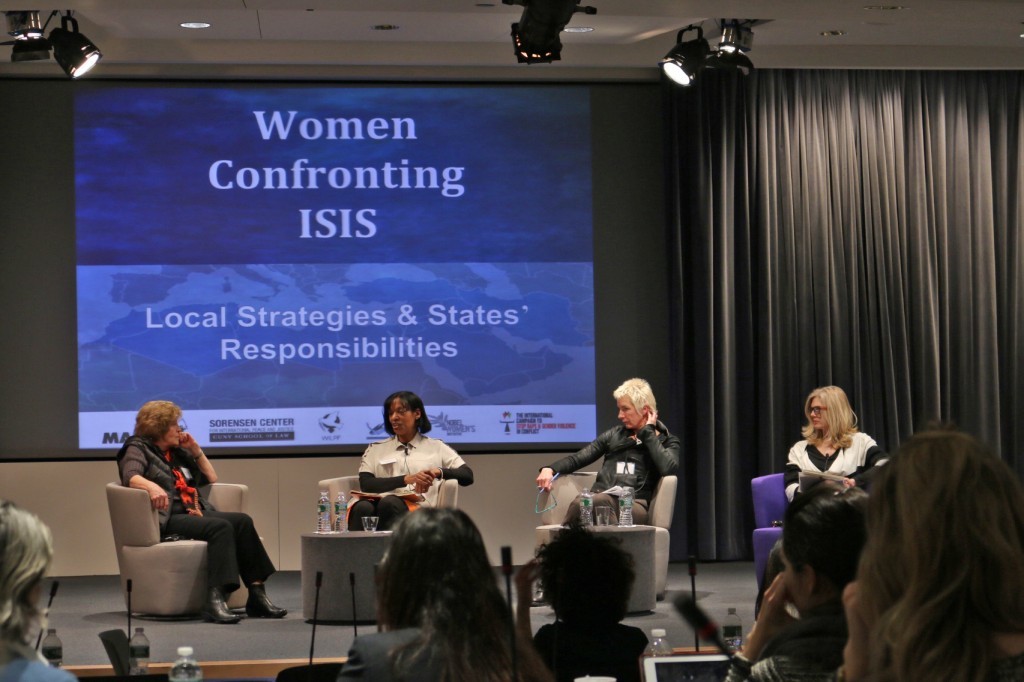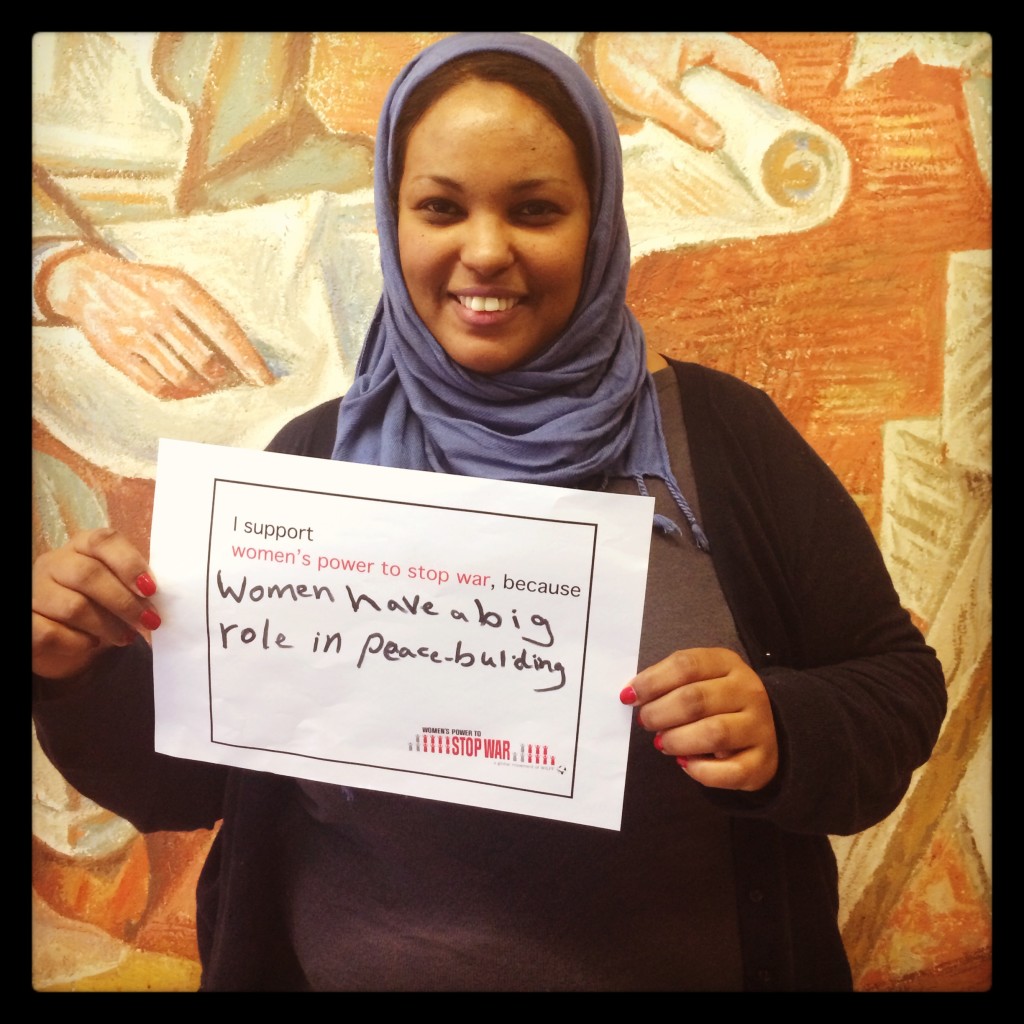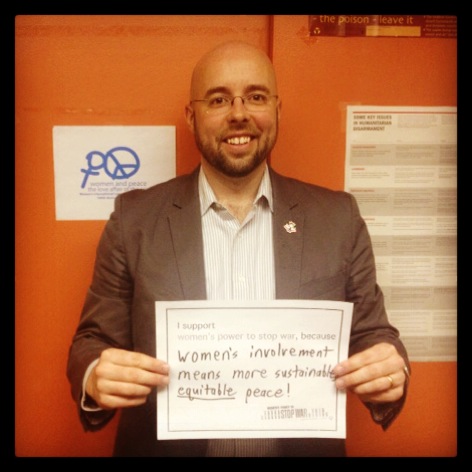Margaret Bearlin in association with Cynthia James and Mary Ziesak
‘Women’s power to stop war: Women’s International League for Peace and Freedom 1915 to 2015’, Honest History, 14 April 2015
2015 marks not only the centenary of Anzac; it is also the 100th anniversary of the founding of the Women’s International League for Peace and Freedom, the oldest international women’s peace movement in the world. On 28 April 1915, 1200 women from both warring and neutral nations gathered in The Hague at an International Congress of Women. These women were ambitious suffragists and peace activists wanting more than an immediate end to this carnage. Their vision and passion was to eliminate the causes of war.
The Resolutions they passed at this Congress laid the basis for the formation of the League of Nations and later the United Nations, determining that international conflict should be resolved by negotiation in a council of all nations, in which women and men should be equally represented. The vision of these women was to challenge militarism, to invest in peace, and build institutions dedicated to preventing war, upholding principles of economic and social justice and opposing discrimination of all kinds.
In 1919, at the second Congress in Zurich, which Vida Goldstein and Cecily John from the Women’s Peace Army (WPA) and Eleanor Moore, from the Sisterhood of Peace, attended, the institution was formalised, adopting the name Women’s International League for Peace and Freedom (WILPF). In 1920 the Sisterhood became the Australian Section of WILPF and many WPA members joined when it was disbanded.
 WILPF today: WILPF at Symposium on Women Confronting ISIS, Commission for the Status of Women, New York, March 2015 (WILPF)
WILPF today: WILPF at Symposium on Women Confronting ISIS, Commission for the Status of Women, New York, March 2015 (WILPF)
WILPF now has national sections in 30 countries and consultative status as an NGO with the United Nations. Its International Secretariat is based in Geneva with a New York UN office.
This essay is an introduction to WILPF’s history. For a more detailed story see the WILPF Centenary TimeLine Posters.
Challenging militarism
Determined to work for peace through negotiation, WILPF women in Australia campaigned against conscription in 1916 and 1917. In 1932 they collected over 100 000 Australian signatures of the 12 million worldwide signatures for the International Declaration on World Disarmament, an international WILPF initiative.
Since World War II, WILPF women have protested against nuclear armaments, against the establishment of the Woomera Rocket Range, against nuclear testing at Maralinga, at Monte Bello and in French Polynesia, against US bases, and for a Nuclear Free and Independent Pacific. WILPF opposed the Vietnam War and conscription, exposing the dangers of chemical and biological warfare.
WILPF continues to campaign for an independent foreign policy for Australia, to redefine security in terms of human need, to decrease military budgets, and to increase development aid. WILPF has joined IPAN (Independent and Peaceful Australia Network) and ICAN (International Campaign to Abolish Nuclear Weapons). WILPF women campaigned against the arms trade, leading to a ban on arms trade fairs in Canberra.
Investing in peace, working for human rights and against all forms of injustice
From its beginning WILPF has campaigned against war toys, supported education for peace and human rights and non-violent conflict resolution, and worked to establish peace studies programs and peace research centres. In 2005 WILPF A.C.T. women celebrated their 90th anniversary with a week-long Festival of Peace. During the International Year of Peace (1986) WILPF proposed the construction of a Peace Memorial in Canberra. A vigil for peace is now held there every Anzac Day.
Much WILPF work involves working with or as members of related organisations such as the United Nations Association of Australia, Medical Association for Prevention of War, Women in Black, UNWomen, A Chorus of Women, and other human rights and development organisations. WILPF participates in the annual 16 days of Activism to End Gender-Based Violence and in the International Day of Peace. WILPF continues to support Aboriginal claims for land rights and self-determination.
Building sustainable peace
In 2000 Australian Felicity Hill, Director of the WILPF UN Office, played a significant role in the adoption of UN Security Council Resolution 1325 ‘Women, Peace and Security’. This Resolution provides important recognition of the crucial role women have to play in processes of conflict prevention, conflict resolution and peacebuilding, a central tenet of the 1915 Congress Resolutions.

 WILPF today: 100 women for 100 years (WILPF)
WILPF today: 100 women for 100 years (WILPF)
In Australia WILPF led the way in furthering the implementation of this resolution by the Federal Government, WILPF A.C.T. forming the national Working Group. WILPF organised workshops for women’s organisations and launched the www.1325australia website. In 2008 WILPF received a grant to undertake background research and gauge support for a Women, Peace and Security National Action Plan, which was finally launched in 2012. We are now centrally involved with other national NGOs in monitoring and reporting on its implementation.
Women’s power to stop war and build permanent peace
Internationally WILPF works tenaciously to persuade international leaders to act on UN Resolutions to bring leaders of women’s groups in war-ravaged countries – Syria, Iraq, the Ukraine – to the peace table. In April 2015, courageous and committed women from all over the world, who believe conflicts and wars cannot be stopped without the participation of women, will again gather in The Hague. This Women’s Power To Stop War global movement of WILPF will culminate in the WILPF Centennial Congress and the International Conference on Peacebuilding, to forge a new peace agenda for the 21st century. Twenty Australian women will be there.
WILPF Australia’s Centenary Celebrations, WILPF Australian Peacewomen Awards and WILPF Women’s Power to Stop War and WILPF Triennial Congress will follow on May 28-30 in Canberra, with a similar challenging agenda. Further information is here and here.: www.wilpf.org.au, www.wilpfinternational.org, www.womenstopwar.org
Margaret Bearlin is Convenor, A.C.T. WILPF Centenary History Committee. This essay is an edited version of the catalogue essay prepared for WILPF Centenary Women’s Power to Stop War Exhibition showing at the Canberra Museum and Gallery until 31 May 2015.


Leave a Reply
You must be logged in to post a comment.